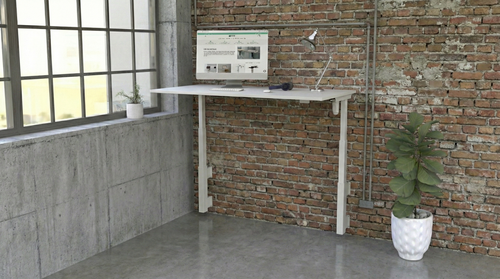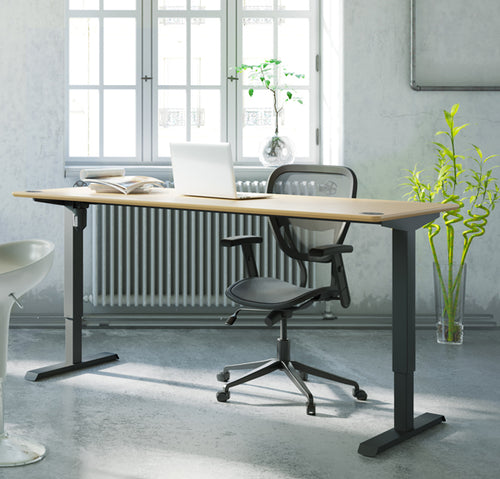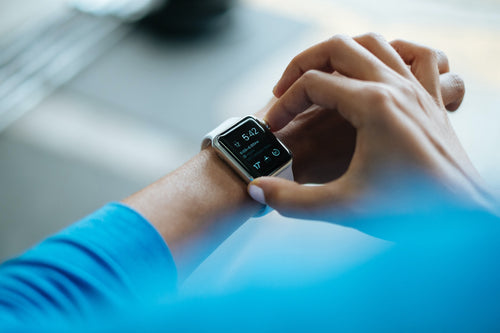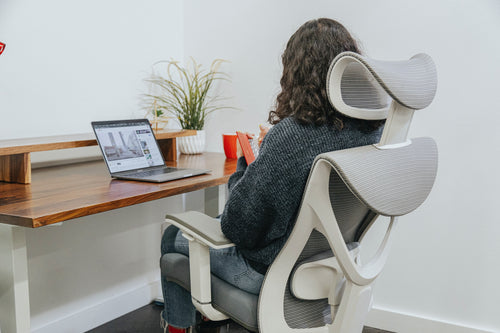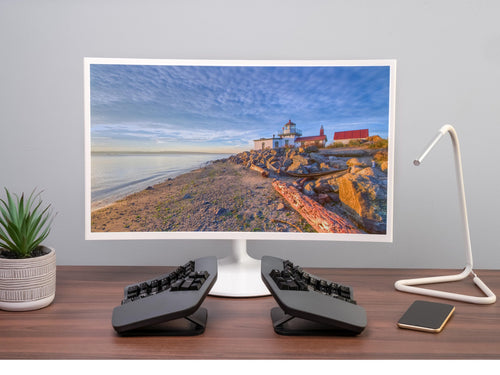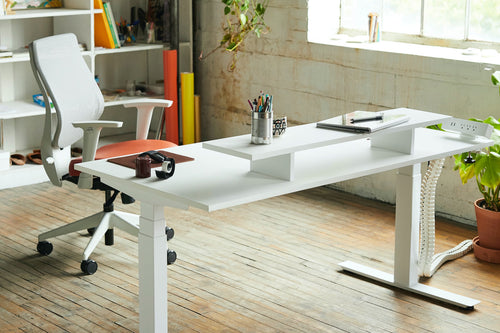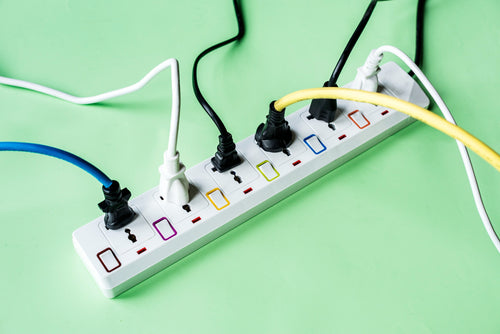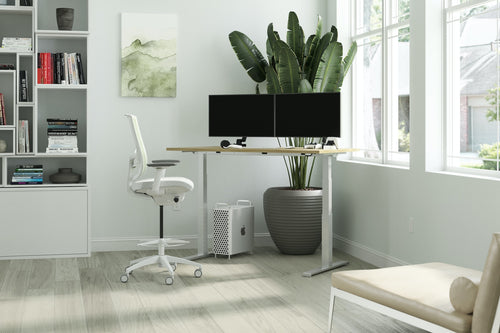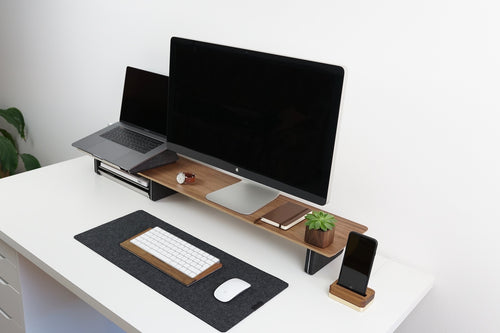If you spend a lot of time working or playing on your computer, you may have experienced some discomfort or pain in your hand, wrist, or arm. This could be a sign of a repetitive strain injury (RSI), which is a common condition caused by overusing your muscles and tendons in unnatural or awkward positions.
One of the main culprits of RSI is the use of a standard mouse, which forces you to twist your wrist and forearm, apply pressure on your nerves and tendons, and make repetitive movements that can strain your muscles. Over time, this can lead to inflammation, numbness, tingling, weakness, and even permanent damage.
Fortunately, there is a solution: an ergonomic mouse. An ergonomic mouse is a mouse that is designed to fit the natural shape and posture of your hand, wrist, and forearm. It can help reduce the risk of developing RSI or alleviate the symptoms if you already have it. It can also improve your comfort, productivity, and performance while working on your computer.
But how does an ergonomic mouse work? And how do you choose the best one for you? In this article, we will answer these questions and more. We will explain the science behind ergonomic mouse design, the benefits of using one, the different types and features of ergonomic mice, and some tips on how to find the best ergonomic mouse for your needs.
The Science Behind Ergonomic Mouse Design
Ergonomic mouse design focuses on the promotion of neutral wrist posture, and reducing pronation in the wrist. Pronation is the rotation of the wrist so that the palm faces downwards or inward. This position can compress the median nerve that runs through the carpal tunnel, a narrow passage in the wrist that connects the hand to the forearm. The median nerve is responsible for controlling the movement and sensation of most the fingers
When you use a standard mouse, you have to pronate your wrist to hold it. This can cause pressure on the median nerve and lead to carpal tunnel syndrome (CTS), one of the most common types of RSI. CTS can cause pain, numbness, tingling, or weakness in the hand and fingers.
An ergonomic mouse aims to prevent or reduce pronation by allowing you to hold it in a more natural position. Depending on the type of ergonomic mouse, this position can be vertical (like a handshake), semi-vertical (at an angle), or horizontal (like a standard mouse but with more support). By holding an ergonomic mouse in this way, you can avoid compressing the median nerve and reduce the risk of CTS.
Another goal of ergonomic mouse design is to reduce muscle tension and fatigue in the hand, wrist, and arm. When you use a standard mouse, you have to grip it tightly with your fingers and thumb, apply force with your index finger to click, and move your whole arm to move the cursor. These actions can cause muscle tension and fatigue over time, which can lead to other types of RSI such as tendinitis or arthritis.
An ergonomic mouse aims to reduce or eliminate these actions by providing a more comfortable grip, softer clicks, and less movement. Depending on the type of ergonomic mouse, this can be achieved by using contours that match your hand shape, oversized buttons that require less force to click, scroll wheels that allow you to scroll vertically or horizontally without moving your arm, trackballs that let you move the cursor with your thumb or fingers without moving your arm, or other features that enhance usability and comfort.
By using an ergonomic mouse that reduces muscle tension and fatigue, you can prevent or relieve other types of RSI and improve your overall well-being.
The Benefits of Using an Ergonomic Mouse
Using an ergonomic mouse has several benefits:
- Greater comfort: Ergonomic mice promote a neutral wrist posture and reduce pronation of the wrist, which can help alleviate existing pain or discomfort.
- Reduced risk of injury: Ergonomic mice can help reduce the risk of developing RSI such as CTS, tendinitis, or arthritis by preventing or minimising nerve compression, muscle tension, and inflammation.
- More comfortable for arthritis sufferers: Ergonomic mice can be more comfortable for people with arthritis or other hand and wrist conditions by providing more support and cushioning for their joints.
- Easier to use: Ergonomic mice can be easier to use than standard mice by providing more intuitive controls such as scroll wheels, trackballs, or gesture buttons that make navigation smoother and faster.
- Increased productivity: Ergonomic mice can help increase productivity by reducing fatigue, improving accuracy, and enhancing performance while working on your computer.
- Increased variety of styles and functions: Ergonomic mice come in a variety of styles and functions that suit different preferences, needs, and budgets. You can choose from vertical, semi-vertical, horizontal, trackball, pen, or joystick mice, each with its advantages and disadvantages.
- Better quality equipment: Ergonomic mice are often of better quality than standard mice by using more durable materials, more advanced sensors, and longer battery life.
The Different Types and Features of Ergonomic Mice
As we mentioned earlier, different types of ergonomic mice have different designs and functions. Here are some of the most common types and their features:
- Vertical ergonomic mouse: A vertical ergonomic mouse is a mouse that has a vertical orientation, meaning that you hold it like a handshake. This position reduces pronation of the wrist and allows for a more natural forearm posture. A vertical ergonomic mouse can help prevent or reduce CTS and other types of RSI by avoiding nerve compression and muscle tension. However, a vertical ergonomic mouse may take some time to get used to, as it is quite different from a standard mouse. It may also be less suitable for gaming or other tasks that require fast and precise movements. Some examples of vertical ergonomic mice are the Logitech MX Vertical, the Evoluent Vertical Mouse, and the Lenovo Go Wireless Vertical Mouse.
- Semi-vertical ergonomic mouse: A semi-vertical ergonomic mouse has a semi-vertical orientation, meaning that you hold it at an angle between horizontal and vertical. This position also reduces pronation of the wrist and allows for a more natural forearm posture, but not as much as a vertical mouse. A semi-vertical ergonomic mouse can also help prevent or reduce CTS and other types of RSI by avoiding nerve compression and muscle tension, but not as much as a vertical mouse. However, a semi-vertical ergonomic mouse may be easier to use than a vertical mouse, as it is closer to a standard mouse. It may also be more suitable for gaming or other tasks that require fast and precise movements. Some examples of semi-vertical ergonomic mice are the Goldtouch Semi-Vertical Wireless Mouse, the Contour Unimouse, and the Microsoft Sculpt Ergonomic Mouse.
- Horizontal ergonomic mouse: A horizontal ergonomic mouse has a horizontal orientation, similar to a standard mouse. However, unlike a standard mouse, a horizontal ergonomic mouse has more features that make it more comfortable and supportive for your hand, wrist, and arm. These features include contours that match your hand shape, oversized buttons that require less force to click, scroll wheels that allow you to scroll vertically or horizontally without moving your arm, trackballs that let you move the cursor with your thumb or fingers without moving your arm, or other features that enhance usability and comfort. A horizontal ergonomic mouse can help reduce muscle tension and fatigue by providing a more comfortable grip, softer clicks, and less movement. However, a horizontal ergonomic mouse may not reduce pronation of the wrist or nerve compression as much as a vertical or semi-vertical mouse. Some examples of horizontal ergonomic mice are the Logitech MX Master 3S, the Microsoft Bluetooth Ergonomic Mouse, and the Logitech Ergo M575.
How to Choose the Best Ergonomic Mouse for You
Choosing the best ergonomic mouse for you depends on several factors, such as:
- Your hand size: You should choose an ergonomic mouse that fits your hand size well. If the mouse is too big or too small for your hand, it can cause discomfort or difficulty in reaching the buttons or controls. You can measure your hand size by measuring the length from the tip of your middle finger to the base of your palm, and the width from the knuckle of your thumb to the knuckle of your little finger. You can then compare your measurements with the dimensions of the ergonomic mice you are interested in.
- Your grip style: You should choose an ergonomic mouse that matches your grip style well. There are three main grip styles: palm grip, claw grip, and fingertip grip. The palm grip is when you rest your whole palm on the mouse and use your fingers to click. A claw grip is when you arch your fingers like a claw on the mouse and use your fingertips to click. Fingertip grip is when you only touch the mouse with your fingertips and use them to click and move the mouse. Each grip style has its advantages and disadvantages in terms of comfort, accuracy, speed, and control. You should choose an ergonomic mouse that supports your preferred grip style or allows you to switch between different grip styles easily.
- Your usage: You should choose an ergonomic mouse that suits your usage well. Depending on what you use your computer for, you may need different features or functions from your ergonomic mouse. For example, if you work with spreads
Using an ergonomic mouse can have many benefits for your health, comfort, productivity, and performance. By choosing an ergonomic mouse that fits your hand size, grip style, and usage, you can prevent or reduce the risk of developing RSI such as CTS, tendinitis, or arthritis. You can also improve your comfort, accuracy, speed, and control while working on your computer.
Different types of ergonomic mice have different designs and functions. You can choose from vertical, semi-vertical, horizontal, trackball, pen, or joystick mice, each with its advantages and disadvantages. You can also look for features such as scroll wheels, trackballs, gesture buttons, or other features that enhance usability and comfort.
We hope this article has helped you understand the science behind ergonomic mouse design, the benefits of using one, the different types and features of ergonomic mice, and some tips on how to find the best ergonomic mouse for you. If you have any questions or feedback, please feel free to reach out. Thank you for reading! 😊



